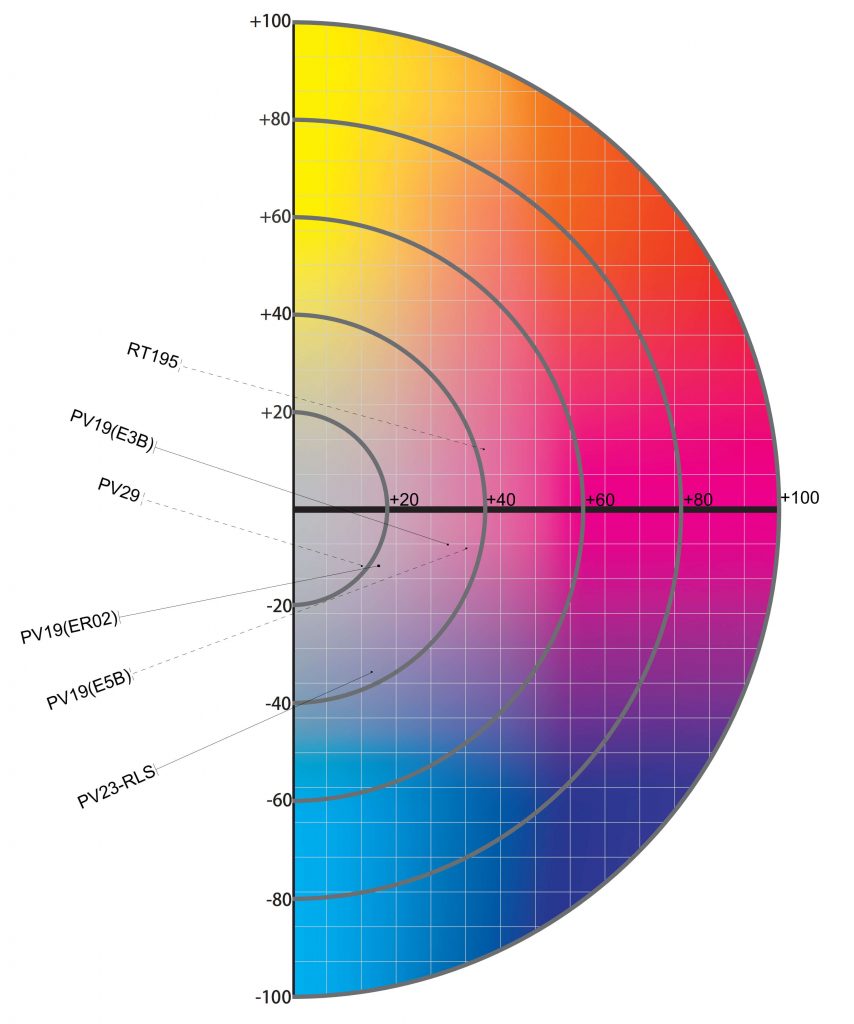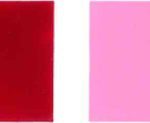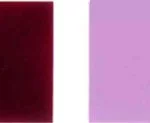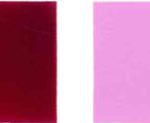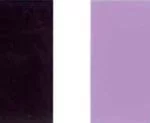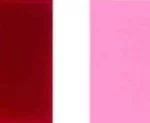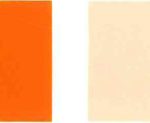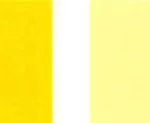Pigment violet 23-Corimax Violet RLS
Pigment violet 23 is an organic compound that is a commercial pigment. It is member of the dioxazine family of heterocyclic compounds, but derived from carbazoles. It is prepared by condensation of chloranil and 3-amino-N-ethylcarbazole. It has a centrosymmetric angular structure. For many years, the structure was assigned, incorrectly, as having a "linear structure" (EC no. 228-767-9, CAS RN 6358-30-1) which differ in terms of the carbazole ring fusion.
Pigment violet 23 is prepared by condensation of an aniline with chloranil.[From Wiki]
Technical parameters of Pigment violet 23
| Color Index No. | Pigment violet 23 |
| Product name | Corimax Violet RLS |
| Product category | Organic Pigment |
| Light Fastness(coating) | 7 |
| Heat Resistance(coating) | 200 |
| Light Fastness(plastic) | 7 |
| Heat Resistance(plastic) | 250 |
Color |  |
| Hue distribution |
Zeyachem is a global supplier of Dioxazine Violet pigments that provide a bluish violet shade, a color not obtainable by other pigments.
The extremely high color strength of Pigment violet 23 makes it a suitable pigment as a shading component. PV23 also exhibits excellent heat fastness and light fastness properties, making it suitable for inks and many paints and coatings applications.
Corimax Violet RLS is a reddish blue shade Dioxazine Violet (PV23) pigment with very high color strength and excellent overall fastness properties, suitable for inks, paints and coatings, including industrial coatings, powder coatings and automotive coatings.
Features:
low viscosity, high gloss, high color strength. Pigment Violet 23 is a transparent purple violet pigment with high saturation and tinting strength.
C.I.Pigment Violet 23 show good tinting strength in flexible PVC while poor resistance to immigration.
P.V.23 heat resistance above 230℃ in polyolefins, when used in transparent PS, temperature shall below 220℃, above this PV 23 shall decompose. When worked in polyester, it is 280℃ stable in 5 hours, while concentration shall above 0.05%.
The pigment is easy to use and requires no rinsing. To ensure maximum color intensity and proper adhesion to the pulp, a retention agent must be added to the pulp before the pigment is applied. Our pigments are supplied by volume sizes. The actual weight varies, depending upon the density of the pigment.
Application:
Recommended for automotive paints, architectural coatings, coil coatings, industrial paints, powder coatings, printing pastes, PVC, rubber, PS, PP, PE, PU, offset inks, water-based inks, solvent inks, UV inks.
Pigment Violet 23 (PV 23) has now been around for more than 55 years. Its beginnings go back to 1928, when a patent was filed for the pigment after researchers at the Hoechst company in Germany first undertook the multistage synthesis based on carbazole, an ingredient of coaltar, and chloranile. Until the end of World War II the pigment was only used to process diamine light blue, a direct dyestuff for cotton.
With the invention of reactive dyes, which considerably simplified the dyeing and printing process for cellulose fibers, this application lost its importance. A new and promising use for PV 23 was quickly found due to the pigment’s ability to produce unique colors.
PV 23 has been used as a pigment since 1953. PV 23 belongs to the group of high-performance polycyclic pigments (HPP’s) that are used whenever the requirements for a colorant are particularly high. These include high light fastness and weather fastness, fastness to solvents, and heat stability. In addition, PV 23 stands out by its high coloring power. Under the electron microscope, the crude violet shows a highly granular crystalline form, whereas the pigment particles are miniscule.
—————————————————————————————————————————————————————————————————
Related Information
Physical and chemical properties:
Hue or light: blue purple
Relative density: 1.40-1.60
Bulk density / (lb / gal): 11.7-13.3
Melting point / ℃: 430-455
Average particle size / μm: 0.04-0.07
Particle shape: cubic / rod
Specific surface area / (m2 / g): 45-102
pH value / (10% slurry): 6.2
Product use:Pigment violet 23 is mainly used for coloring of coatings, inks, rubbers and plastics, and also for coloring of synthetic fibers
There are 124 kinds of commercial formulation brands of the pigment. Carbazoazine is a kind of blue violet variety with strong and unusual application, and the specific surface area of monolite violet RN is 74m2 / g. It is widely used in various fields such as coating, ink printing, plastic and fabric printing and dyeing. It has good fastness to varnish when coloring. It can be used for air drying paint, automobile paint OEM and baking paint, especially for the latex paint with CuPc toner and strong light tone. It can be used for plastic coloring, with heat resistance of 280 ℃ in polyolefin and high color retention (only 0.07% of pigment concentration is needed for HDPE with 1 / 3SD); it can also be used for Colouring of polyester and PE.
Synthesis principle: Carbazole is used as a raw material, and N-ethylation is performed under normal pressure in the presence of a phase inversion catalyst, and a nitration reaction and a reduction reaction are performed to synthesize 2-amino-N-ethylcarbazole; The 3,5,6-tetrachloroparaquinone (Chloranil) is subjected to condensation and ring-closure reactions, filtered, washed with water, and dried to obtain a crude carbazole violet; finally, general pigmentation treatment by kneading or kneading to obtain CI pigment violet 23.
aliases:Pigment Violet RL; 51319; C.I. Pigment Violet 23; 8,18-Dichloro-5,15-diethyl-5,15-dihydrodiindolo(3,2-b:3',2'-m)tri- phenodioxazine; CI 51319; Diindolo(3,2-b:3',2'-m-)triphenodioxazine, 8,18-dichloro-5,15-diethyl-5,15-dihydro-; Carbazole Dioxazine Violet; Carbazole Violet; Chromofine Violet RE; Cyanadur Violet; Dioxazine Violet; Dioxazine purple; EB Violet 4B7906; EMC Violet RL 10; Fastogen Super Violet RN; Fastogen Super Violet RN-S; Fastogen Super Violet RTS; Fastogen Super Violet RVS; Helio Fast Violet BN; Heliofast Red Violet EE; Heliogen Violet; Heliogen Violet R Toner; Hostaperm Violet RL; Hostaperm Violet RL Special; Hostaperm Violet RL Special 14-4007; Lake Fast Violet RL; Lake Fast Violet RLB; Lionogen Violet R 6100; Lionogen Violet RL; Lionol Violet HR; Monolite Fast Violet R; PV Fast Violet BL; PV Fast Violet RL-SPE; Paliogen Violet 5890; Paliogen Violet L 5890; Permanent Violet; Permanent Violet R; Sandorin Violet BL; Sanyo Permanent Violet BL-D 422; Sumikacoat Fast Violet RSB; Sumitone Fast Violet RL; Sumitone Fast Violet RL 4R; Sumitone Fast Violet RLS; Symuler Fast Violet BBL; Symuler Fast Violet BBLN; Unisperse Violet B-E; Vynamon Violet 2B; 8,18-Dichloro-5,15-diethyl-5,15-dihydrodiindolo(3,2-b:3',2'-m)triphenodioxazine; Diindolo(3,2-b:3',2'-m)triphenodioxazine, 8,18-dichloro-5,15-diethyl-5,15-dihydro-; 8,18-dichloro-5,15-diethyl-5,15-dihydrocarbazolo[3',2':5,6][1,4]oxazino[2,3-b]indolo[2,3-i] phenoxazine
Molecular Structure:
